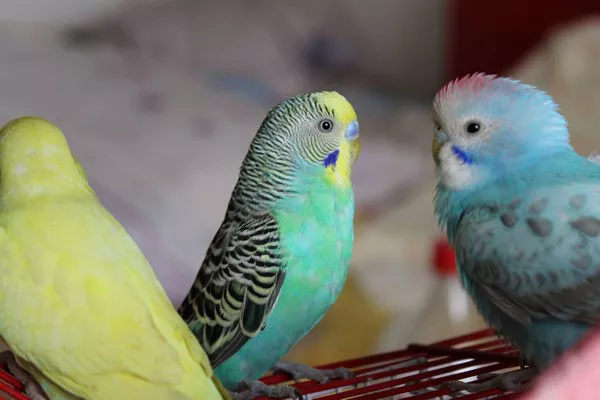Indian Ringneck parrots are known for their striking colors and charming personalities. Among the various colors and mutations available, the blue Indian Ringneck parrot stands out as a particularly sought-after companion bird. If you’re considering adding a blue Indian Ringneck to your family, you’re likely wondering, “How much is a blue Indian Ringneck?” In this comprehensive guide, we’ll explore the factors that influence the cost of these beautiful birds, from their breed and coloration to their age and source.
The Indian Ringneck Parrot: A Brief Introduction
Before delving into the costs associated with blue Indian Ringneck parrots, it’s important to understand a bit about the bird itself. The Indian Ringneck parrot, scientifically known as Psittacula krameri manillensis, is a medium-sized parrot species native to India and surrounding regions. These parrots are characterized by their stunning, ring-shaped markings around their necks. They are highly intelligent, social, and can be excellent companions for those willing to invest time and effort in their care.
How Much is a Blue Indian Ringneck? Breed and Coloration
One of the primary factors influencing the cost of a blue Indian Ringneck parrot is its breed and coloration. Blue Indian Ringnecks come in various shades, from cobalt blue to turquoise, and these colors can vary in intensity. Additionally, there are various mutations, such as lacewing and violet, that can affect the price. Pure, vibrant blues and rare color mutations tend to be more expensive. A standard blue Indian Ringneck may be more affordable compared to a rarer color variation. The price range for a blue Indian Ringneck parrot typically starts at $200 and can go up to $800 or more for a rare mutation.
Age Matters: Young vs. Mature Birds
The age of a blue Indian Ringneck parrot is another crucial factor influencing its price. Younger birds, often referred to as hand-fed or baby birds, tend to be more expensive than older, mature birds. This is because hand-fed birds are typically more tamable and easier to train. If you’re looking for a companion that you can bond with and teach tricks, investing in a hand-fed baby bird might be your best choice. However, you’ll need to be prepared to pay a premium for the young age and extra care that goes into raising these birds.
Source and Location
Where you choose to purchase your blue Indian Ringneck parrot can greatly affect the cost. Several sources are available, including breeders, pet stores, and adoption centers. Breeders often offer a wider variety of colors and mutations but tend to charge higher prices, especially for rarer variations. Pet stores may have more affordable options, but the quality and health of the birds may vary. Adoption centers, on the other hand, can be a cost-effective choice if you’re willing to provide a forever home for a rescued bird. The cost of a blue Indian Ringneck parrot can also vary depending on your location. Prices may be higher in metropolitan areas and lower in rural regions.
Additional Costs: Accessories and Care
When considering the cost of a blue Indian Ringneck parrot, it’s crucial to factor in additional expenses beyond the purchase price. Parrots, in general, require a substantial investment in terms of their care and well-being. Some of the ongoing costs include a spacious cage, high-quality bird food, toys, perches, and regular visits to an avian veterinarian. These costs can add up quickly, so it’s important to budget for the long-term care of your feathered friend.
Training and Socialization
Blue Indian Ringneck parrots are known for their intelligence and ability to mimic sounds and words. If you want your parrot to talk or perform tricks, you’ll need to invest time in training and socialization. This may involve purchasing training aids and spending quality time with your bird. Training sessions, toys, and interaction are all part of the investment needed to develop a well-adjusted and happy blue Indian Ringneck.
Cost of Health Maintenance
Regular veterinary check-ups are a necessity for keeping your blue Indian Ringneck in good health. Avian veterinarians specialize in treating birds and can provide the best care for your parrot. The cost of veterinary care can vary, but it’s important to budget for routine examinations, vaccinations, and potential medical emergencies.
Conclusion: The Price of Blue Indian Ringneck Parrots
In conclusion, the cost of a blue Indian Ringneck parrot can vary widely depending on several factors. Breed and coloration, age, source, location, and ongoing care expenses all play a significant role in determining the price. When contemplating adding a blue Indian Ringneck parrot to your family, it’s crucial to consider not only the initial purchase cost but also the long-term commitment and responsibility involved in caring for these intelligent and affectionate birds. Before making a decision, it’s advisable to do thorough research, speak with reputable breeders or adoption centers, and budget for the full range of expenses involved in providing a happy and healthy life for your blue Indian Ringneck parrot.
Related Topics:
What Is a Ringneck Parrot: A Comprehensive Guide
When do ringneck parrots get their ring?
Where do indian ringneck parrots live?























